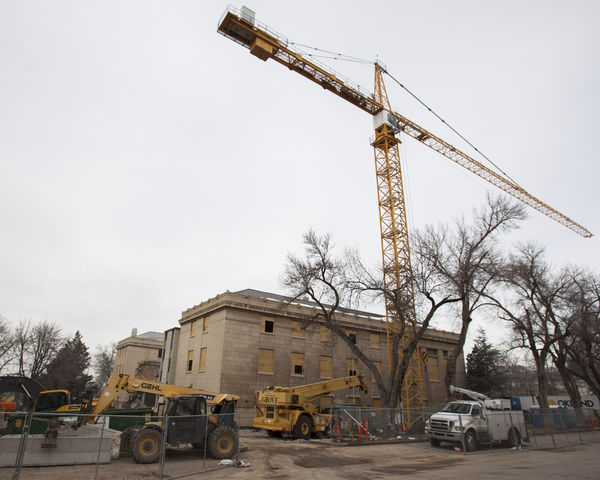Sidewalks have been blocked off as construction begins to update the George Thomas Building (GTB) on President’s Circle into the Crocker Science Center.
Crews are currently working on removing the library stacks of GTB. To prevent any accidents, safety measures will temporarily be in place for the demolition phase.
Gary Crocker and his wife, U alumna Ann Crocker, donated $10 million to the new center, which is slated to finish in Fall 2017. Shireen Ghorbani, spokesperson for Facilities Management, said construction plans do not involve an “extensive impact” on pedestrian traffic around the building.
The remodel will increase the building’s square footage by almost 40,000 square feet to a completed 126,000 square feet. Additions include a new lobby for visitors to function as a portal to the science yard, a four-story atrium to provide natural light into study and research areas and various lecture halls to seat 25 to 350 students.
In 1978, GTB was listed as a historic building in the National Register of Historic Places. Part of the emphasis of the project is retaining the heritage of the building, while updating it to fit modern standards. The majority of the external construction will remain as originally designed, but the interior will receive seismic upgrades to help with environmental impact and energy consumption.
“The idea is to try and maintain the feel … and historic nature of the building,” Ghorbani said.
Over the course of its lifetime the structure has served as both a U library and the Utah Museum of Natural History. Facilities Management is working with Utah State Historic Preservation Office on the remodel with its historic status. Going forward, the Crocker Science Center will focus on providing an open environment for teaching and research in one location.
Amanda Goodner, a freshman in speech and hearing sciences, said she is appreciative of the efforts in preserving the building.
“They’re renovating it to give students newer and better resources,” Goodner said. “Keeping the building in its original condition … while maintaining eco-friendliness shows respect to its history.”
@BeauHart13


